Pastel de Nata: Homemade Portuguese Custard Tart Recipe
5.0
(117)
Your folders
Your folders
Prep Time: 1 hours
Cook Time: 20 minutes
Author : Annie

Ingredients
Export 7 ingredients for grocery delivery
Instructions
Step 1
Using your fingers, quickly mix the flour, water and salt in a bowl, until it starts pulling away from the sides of the bowl. You can also use a mixer with a dough hook attached to it. This initial dough should be very similar to a sticky wet bread dough so use a spatula to get it out of the bowl. Transfer the dough to a floured surface, sprinkle some more flour on top of the dough and wrap it in cling film. Set it aside for 15 minutes in order to let any gluten that may have been activated to rest.
Step 2
Once fifteen minutes has passed, it’s time to start the laminating process. So, add more flour to your surface and make sure you have plenty of space to work with your dough. We are going to start rolling our sticky dough, make sure to cover your rolling pin in flour for this. Once we’ve reached an approximate 25cm square, it’s time to create our first layer of butter.
Step 3
Using a light brush, brush off the excessive flour from the dough. With a small spatula spread evenly 1/3 of the butter on to 2/3 of the dough. Leave a 2cm border in order to stop the butter from coming out during the laminating process.
Step 4
Carefully fold the unbuttered third of dough over the middle third. Use a dough scrapper to loosen it if it sticks, again brush off any excessive flour from the dough. Fold the remaining third on top of the rest of the dough.
Step 5
Rotate the dough 90 degrees to the left so the last fold is facing you. Repeat the rolling process to an approximate 25cm square. Once again, spread another 1/3 of the butter on top of 2/3 of the dough even. Repeat the folding process as above.
Step 6
For the final layer, turn the dough 90 degrees to the left and this time roll out the dough to a 30x35cm rectangle. With the shorter side facing you, spread the remaining butter over the entire surface of the dough this time.
Step 7
Using our dough scrapper, lift the edge of the dough and while scraping and brushing the excessive flour, roll the dough very tightly. The result should be a tightly rolled pastry log. Trim the ends and wrap it in cling film and chill it for at least 3 hours or ideally, overnight.
Step 8
In another bowl whisk together the flour and 50ml of milk until smooth.
Step 9
In a small pan, combine the caster sugar, the cinnamon and the water. Bring it to a boil and cook it until it reaches 100C degrees. If you don’t have a thermometer, dip a spoon into your syrup and lift it, a large drop is supposed to form and as if falls it should leave a short thin string behind. Do not stir your solution, as we don´t want any crystallization.
Step 10
Meanwhile, in another pan, bring the remaining milk to a boil. Once boiled, remove it from the heat, add the vanilla and lemon zests and cover it with a lid to infuse for a minute or two. Pour it into the flour and milk mixture.
Step 11
In a thin stream, pour the sugar syrup into our infused milk mixture. Remove the cinnamon stick and stir it until it cools slightly.
Step 12
Add in the egg yolks and whisk, strain the mixture into a jug, cover it and set it aside.
Step 13
Pre heat your oven to 290 degrees if you can, if not, set to the hottest temperature that your oven reaches.
Step 14
Remove your pastry log from the fridge and with a sharp knife divide it into 12 even slices. Place each slice cut side down in each well of a non-stick 12-cup muffin tin. Let the dough pieces rest for 10 minutes to soften. Here is where you’ll be able to see those buttery layers that we made previously.
Step 15
Place a small cup of water on the side to dip your thumbs in. With wet thumbs, start shaping the dough spirals. Press it against the bottom of the tin and then smooth the dough up to the sides, creating a raised lip above the pan. Be careful as the bottom should not be too thin.
Step 16
Fill each cup ¾ full with the custard. Bake the pastéis until the edges are golden brown, around 15-17 minutes. If your oven has a grill mode, turn it on for the final minutes to achieve the distinctive burnt effect of your typical pasteis de nata.
Step 17
Remove them from the oven and let them cool for a few minutes before serving. Our favourite way of eating them is while they’re still warm and with a sprinkle of cinnamon on top.
Top similar recipes
Curated for youYour folders
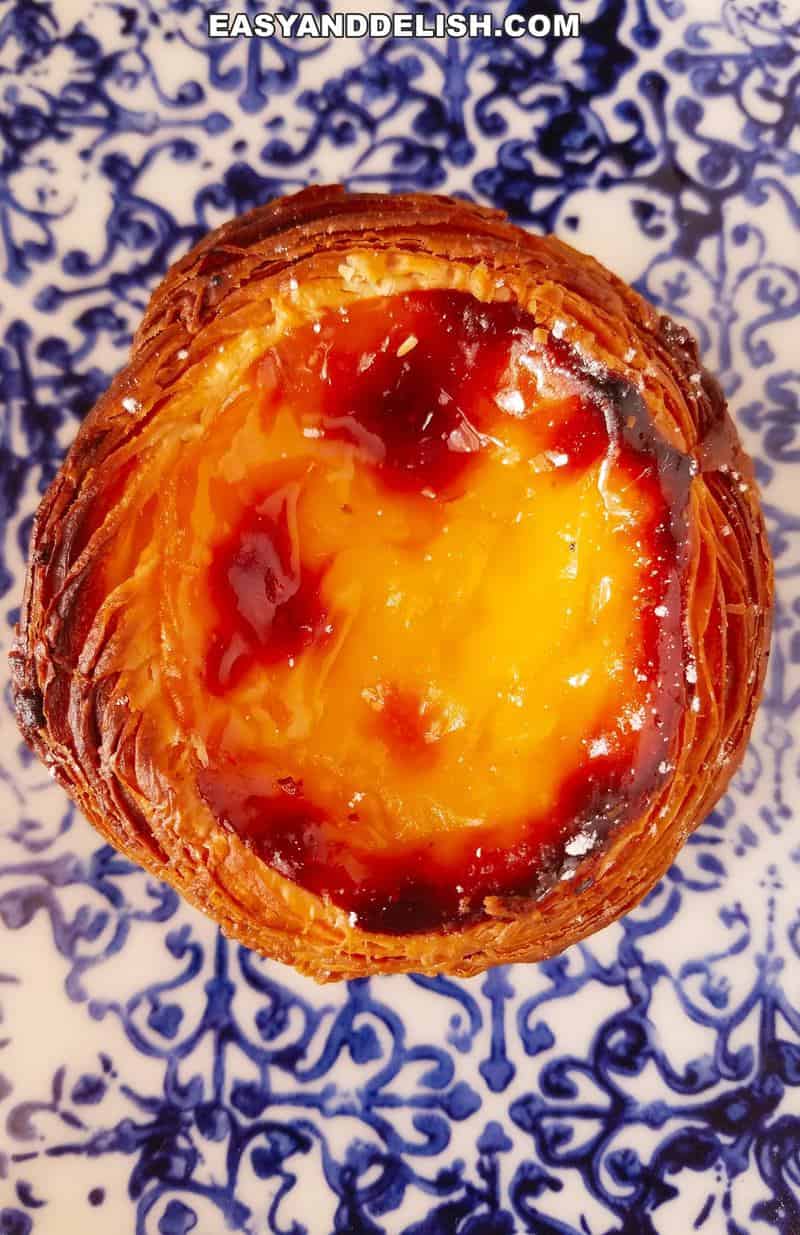
 176 views
176 viewsPastel de Nata (Portuguese Egg Tart...
easyanddelish.com
5.0
(17)
22 minutes
Your folders

 408 views
408 viewsPasteis de Nata (Portuguese Egg Cus...
myfoodandfamily.com
15 minutes
Your folders

 465 views
465 viewsPastel de Nata Portuguese Egg Tarts
sweetandsavor.com
5.0
(2)
10 minutes
Your folders
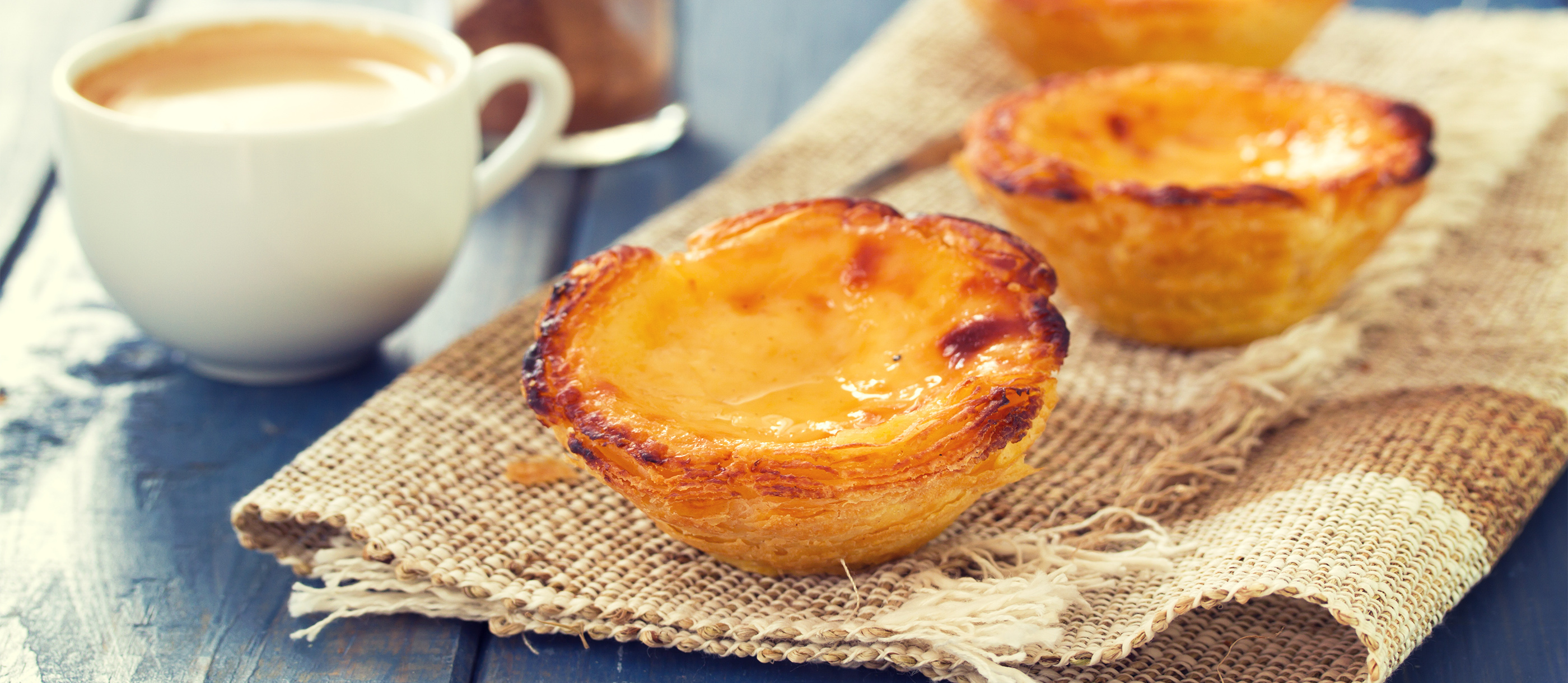
 805 views
805 viewsPastel de nata
tasteatlas.com
4.6
(262)
20 minutes
Your folders

 213 views
213 viewsPastel de Nata
lidl-kochen.de
4.3
(7)
20 minutes
Your folders
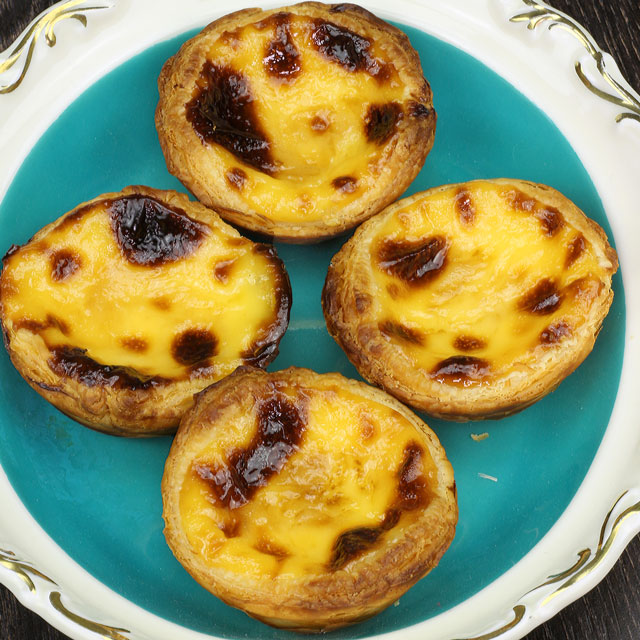
 458 views
458 viewsPastel de Nata or Portuguese Egg Ta...
foxyfolksy.com
5.0
(10)
20 minutes
Your folders
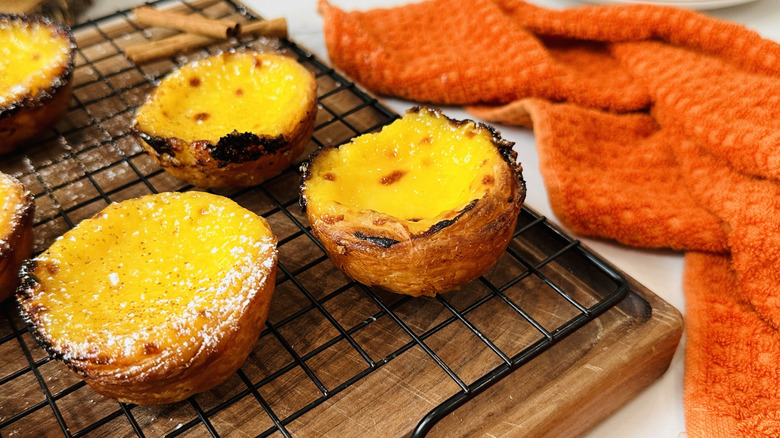
 75 views
75 viewsPortuguese Custard Tarts (Pasteis d...
chowhound.com
5.0
(23)
20 minutes
Your folders

 371 views
371 viewsPortuguese Custard Tarts - Pasteis ...
allrecipes.com
4.4
(145)
20 minutes
Your folders

 667 views
667 viewsPastéis De Nata | Portuguese Custar...
leitesculinaria.com
4.9
(94)
Your folders

 1981 views
1981 viewsPasteis De Nata (Portuguese Custard...
spanishsabores.com
5.0
(7)
30 minutes
Your folders
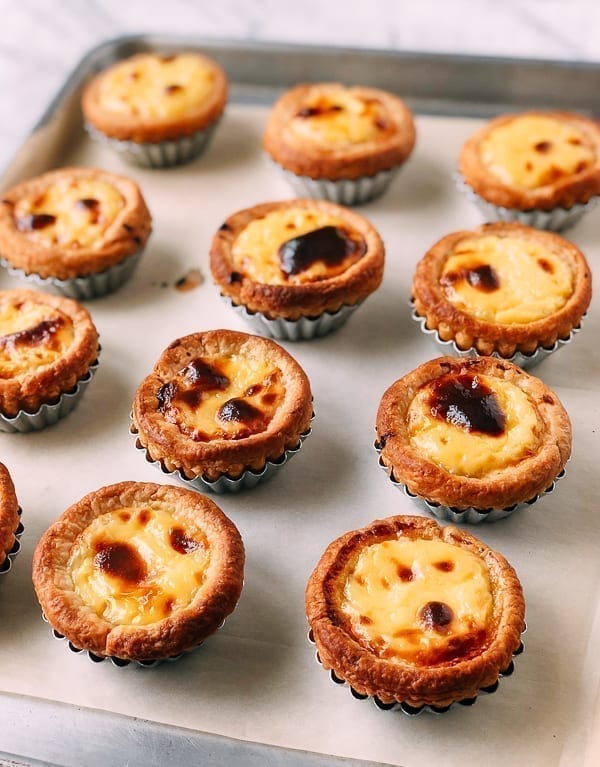
 745 views
745 viewsPortuguese Custard Tarts (Pasteis d...
thewoksoflife.com
4.9
(30)
30 minutes
Your folders

 278 views
278 viewsPasteis de Nata (Portuguese Custard...
internationalcuisine.com
5.0
(2)
30 minutes
Your folders

 423 views
423 viewsPortuguese Custard Tarts (Pasteis d...
allrecipes.com
4.9
(109)
25 minutes
Your folders
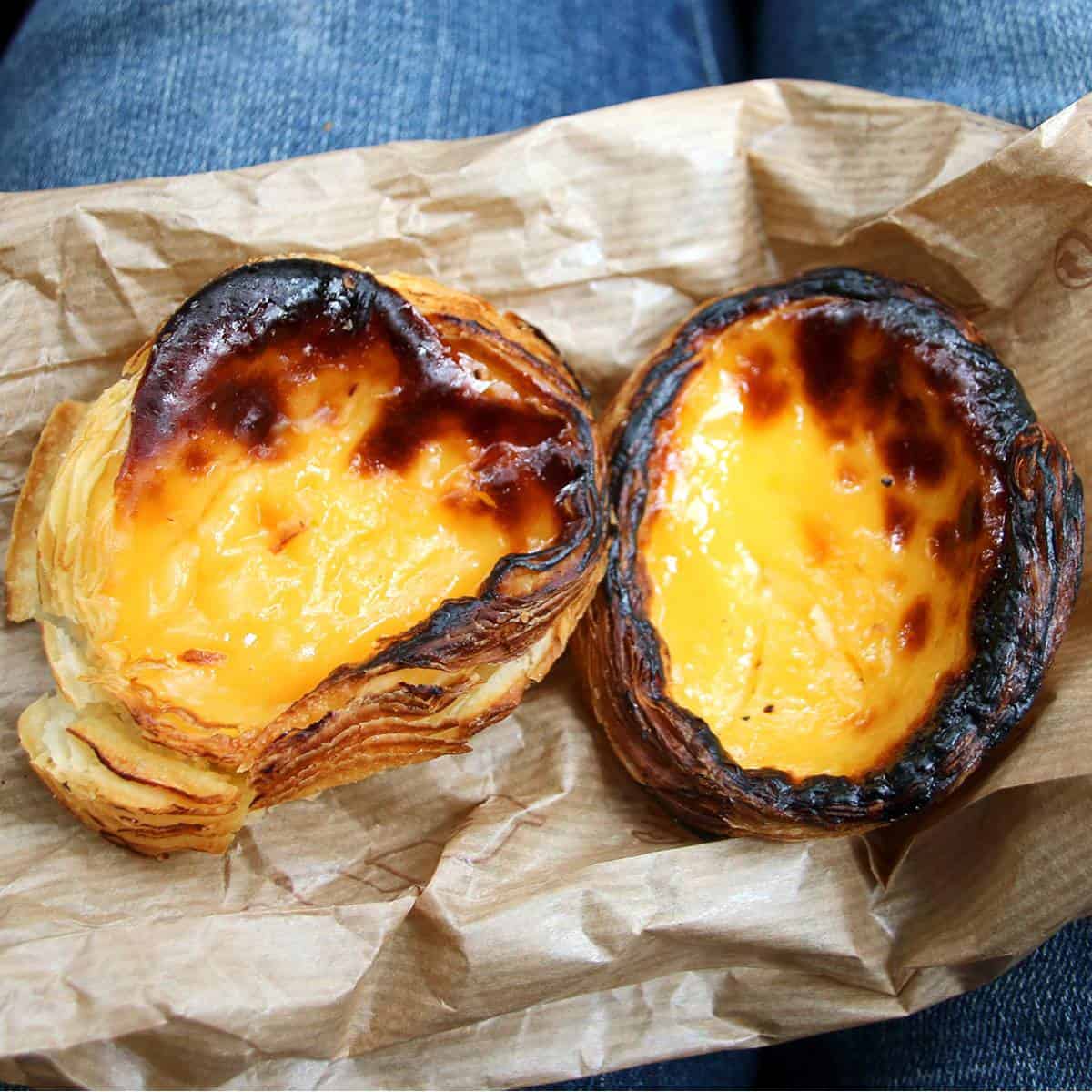
 257 views
257 viewsPastéis de Nata (Portuguese Custard...
daringgourmet.com
4.9
(7)
15 minutes
Your folders
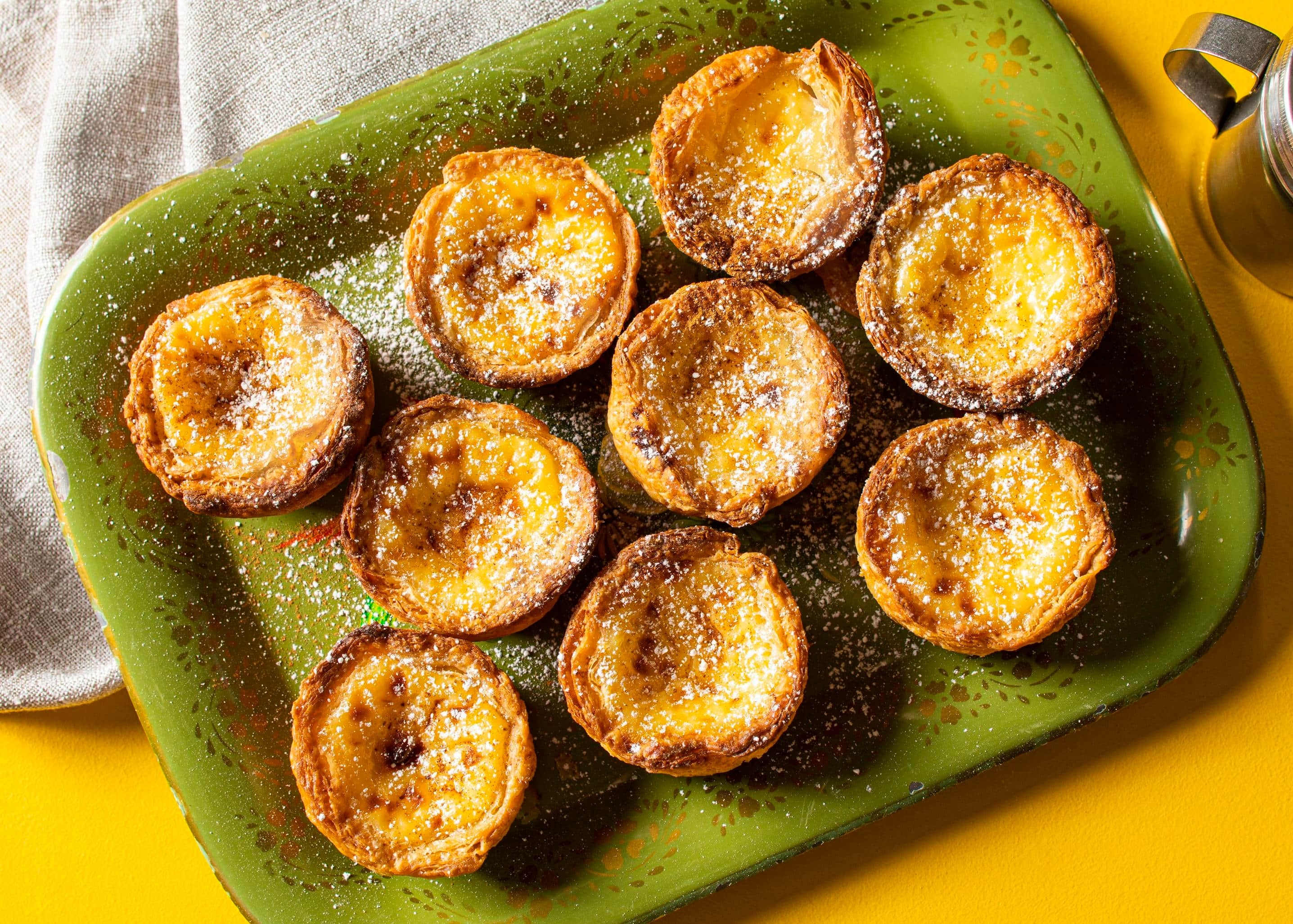
 68 views
68 viewsPastéis de Nata (Portuguese Custard...
americastestkitchen.com
4.6
(7)
Your folders

 111 views
111 viewsPastel de nata - Wikipedia
en.wikipedia.org
Your folders

 431 views
431 views#Meatlessmondays – Pastel De Acelga...
perudelights.com
45
Your folders
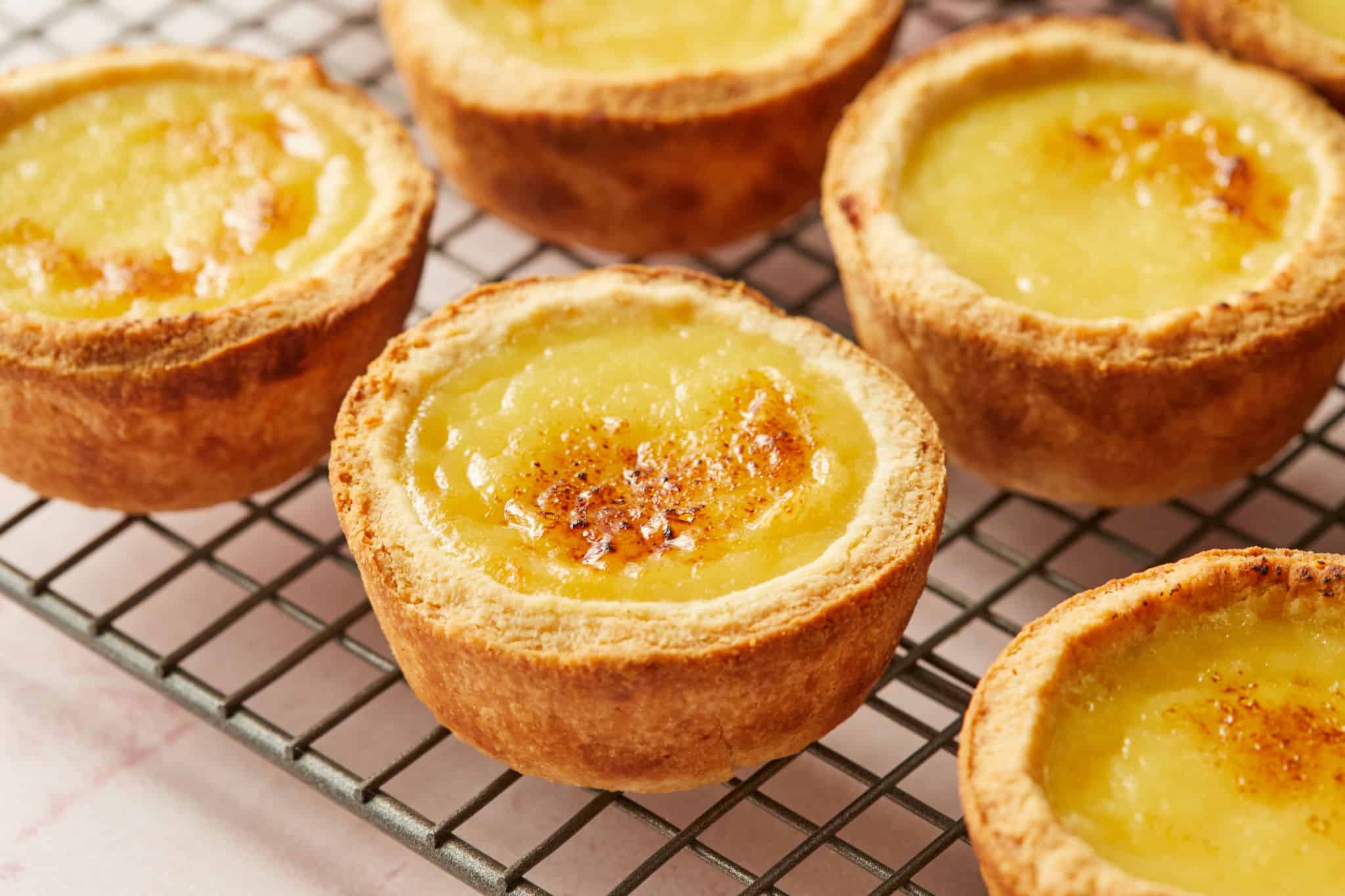
 959 views
959 viewsPortuguese Custard Tarts Recipe
biggerbolderbaking.com
4.6
(25)
15 minutes
Your folders
 88 views
88 viewsPortuguese Custard Tarts Recipe
biggerbolderbaking.com